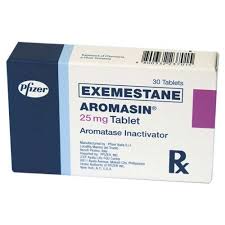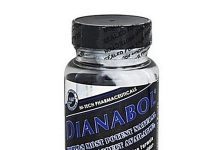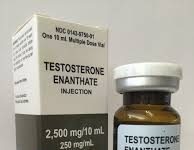The Comprehensive Guide to Understanding Trenbolone Acetate: Exploring Anabolic Steroid Effects and Risks When Using Tren
Exploring the Impact of Trenbolone Steroids on Muscle Mass: Unraveling the Effects of Anabolic Steroid Use
The use of anabolic-androgenic steroids (AAS) among bodybuilders for increased muscle growth has raised concerns about its impact on health. Trenbolone, a synthetic anabolic steroid and derivative of testosterone, exhibits potent androgenic effects through the androgen receptor. Bodybuilders often use trenbolone to stimulate muscle tissue growth and increase lean muscle mass.
Trenbolone, a controlled substance, is available in various forms like trenbolone acetate and trenbolone enanthate. Its androgenic effects are crucial for muscle development, but excessive AAS use may lead to cardiovascular issues. The androgen receptor, when activated by trenbolone, plays a key role in protein synthesis, aiding in the synthesis of lean muscle mass.
Despite its potential benefits in bodybuilding, trenbolone use is not without risks. The androgenic-anabolic properties of this synthetic steroid may cause adverse effects, including the development of male characteristics in females and disruption of endogenous steroid production. Anabolic steroids, including trenbolone, are sometimes prescribed for certain medical conditions, but misuse by bodybuilders can lead to serious health consequences.
The use of injectable trenbolone or oral AAS may increase muscle size and strength, but it’s essential to recognize the potential dangers. Trenbolone increases the synthesis of anabolic hormones, contributing to the effective development of muscle mass. However, the indiscriminate use of these steroids, often in a tren cycle, can lead to adverse effects, including cardiovascular issues and disruptions in the natural balance of endogenous steroids.
While originally adapted for use by bodybuilders to build lean muscle mass, trenbolone’s strong anabolic effects and its impact on androgen receptors have made it a performance-enhancing drug. Anabolic steroids, including trenbolone, belong to a category of synthetic substances that mimic the effects of testosterone, influencing skeletal muscle development.
The use of trenbolone steroids for increasing muscle mass in bodybuilding comes with both benefits and risks. Understanding the androgenic effects, the role of androgen receptors, and the potential cardiovascular and endocrine consequences is crucial for individuals considering AAS use.
Understanding the Long-Term Effects: How Trenbolone Steroids and Anabolic Steroid Use Affect Testosterone and Muscle Mass
The use of trenbolone acetate, a potent anabolic steroid among steroid users, raises concerns about the long-term effects on testosterone and muscle mass. Trenbolone, also known as an androgenic anabolic steroid, belongs to the category of anabolic–androgenic steroids (AAS). The steroid hormone, chlormadinone acetate, plays a role in the male sex hormone, affecting certain types of steroids.
Trenbolone hexahydrobenzylcarbonate is one of the anabolic agents commonly used by those who prescribe anabolic steroids. While anabolic steroids may be effective in certain cases, their effects on protein synthesis and muscle can be significant. However, the use of trenbolone acetate and other anabolic substances may lead to a decline in testosterone levels over time.
Anabolic androgenic steroids, including trenbolone, impact the male sex hormone, influencing muscle development. The steroid ring in trenbolone may contribute to alterations in testosterone and muscle mass.
The effects of steroid use extend beyond muscle development; steroids cause changes in the endocrine system and can disrupt the delicate balance of hormones. Prolonged use can lead to a decrease in natural testosterone production, affecting reproductive health and causing long-lasting consequences.
While some individuals turn to steroids to increase muscle mass, the consequences of using trenbolone acetate and other anabolic–androgenic steroids can be severe. Understanding the long-term effects is crucial for both athletes and medical professionals. It is essential to recognize the potential risks associated with the common anabolic steroid use and address the need for responsible and informed decisions regarding the use of steroids in enhancing performance and physique.
The Hidden Dangers: Trenbolone Steroids and the Potential Effects of Anabolic Steroids on Testosterone Levels
The use of Trenbolone acetate, a potent and effective steroid, has been a subject of interest in the realm of bodybuilding and athletic performance. Athletes and fitness enthusiasts often turn to this anabolic steroid for its reputed positive effects on muscle mass and overall strength. However, it’s crucial to explore the impact of Trenbolone on testosterone levels.
Testosterone and Trenbolone are intricately connected in the realm of anabolic steroids. Trenbolone, a derivative of nandrolone, is known for its enhanced anabolic properties, contributing to muscle growth and improved performance. It achieves this by binding to androgen receptors more strongly than testosterone itself, promoting nitrogen retention and protein synthesis.
While the use of steroids, including Trenbolone, can yield significant gains in muscle mass and strength, it’s essential to consider their potential effects on testosterone levels. Anabolic steroids, including Trenbolone, can suppress natural testosterone production, leading to hormonal imbalances.
Some argue that the positive effects of Trenbolone on muscle growth and performance can be harnessed responsibly. Properly managed cycles, post-cycle therapy, and medical supervision can mitigate potential risks associated with hormonal imbalances. Athletes and bodybuilders must prioritize their health and adhere to recommended dosages to minimize the negative impact on testosterone levels.
The use of Trenbolone acetate, an effective steroid, can yield positive effects on muscle mass and strength. However, the potential impact on testosterone levels underscores the importance of responsible use and close monitoring. Striking a balance between reaping the benefits of this powerful anabolic steroid and safeguarding hormonal health is crucial for individuals venturing into the realm of using steroids for performance enhancement.

Unveiling the Risks: How Using Trenbolone Steroids Can Cause Steroid Abuse and Alter Muscle Mass
The positive effects of Trenbolone steroids on muscle mass are undeniable, but it is crucial to acknowledge the potential risks associated with their use. Trenbolone, a powerful anabolic steroid, is renowned for its ability to enhance muscle growth, increase strength, and promote overall athletic performance. Many users experience significant gains in lean muscle mass, making it a popular choice among bodybuilders and athletes.
However, the positive impact of Trenbolone comes with inherent risks. One major concern is its potential impact on cardiovascular health. Trenbolone can lead to an increase in blood pressure and cholesterol levels, which may elevate the risk of heart-related issues. Users must be vigilant in monitoring their cardiovascular health and consider regular check-ups to mitigate these risks.
The liver is another organ that may be adversely affected by Trenbolone use. Elevated liver enzymes are a common occurrence, indicating potential strain on this organ. Regular liver function tests are imperative for users to ensure early detection of any abnormalities and to prevent severe complications.
Psychological effects also warrant consideration. Trenbolone has been associated with mood swings, aggression, and insomnia. Users may experience heightened irritability, which can strain personal relationships. Mental health awareness and support are crucial aspects of mitigating these risks.
It is essential for users to educate themselves on proper dosages and cycles, as excessive and prolonged use can exacerbate these risks. Consulting with healthcare professionals and incorporating regular health check-ups are paramount for users to safeguard their well-being while reaping the benefits of Trenbolone.
While Trenbolone steroids can undoubtedly have positive effects on muscle mass and athletic performance, users must be cognizant of the potential risks associated with their use. Responsible and informed usage, coupled with proactive health monitoring, can help strike a balance between reaping the benefits and minimizing the negative impact on one’s overall health.
Decoding the Consequences: Effects of Anabolic Steroids, Including Tren, on Testosterone and Long-Term Health
Decoding the consequences of anabolic steroids, including Tren, on testosterone and long-term health reveals a complex interplay between positive and negative effects. On the positive side, anabolic steroids, when used responsibly under medical supervision, can have therapeutic benefits. They are prescribed to treat conditions like muscle wasting, delayed puberty, and hormone imbalances.
One notable positive effect is the enhancement of muscle mass and strength, aiding individuals in recovering from injuries or illnesses. Athletes, under strict monitoring, may also experience improved performance. Additionally, anabolic steroids can contribute to increased bone density, benefiting those with osteoporosis or related conditions.
However, the positive impacts come with potential drawbacks. Anabolic steroid use, including popular compounds like Trenbolone, can disrupt the body’s natural testosterone production. While external sources supply testosterone, the body’s endocrine system may reduce its own production, leading to hormonal imbalances. Post-steroid use, individuals may face challenges in restoring their natural hormonal equilibrium.
Long-term health implications of anabolic steroid use extend beyond hormonal effects. Cardiovascular risks, liver strain, and psychiatric effects are concerns. Yet, responsible use and monitoring can mitigate these risks. In some medical scenarios, such as severe burns or HIV-associated wasting, the benefits may outweigh potential harms.
Moreover, ongoing research explores the potential positive effects of selective androgen receptor modulators (SARMs) that mimic the benefits of anabolic steroids with reduced side effects. These compounds show promise in promoting muscle growth and improving bone density without some of the detrimental consequences associated with traditional steroids.
Decoding the consequences of anabolic steroids, including Tren, on testosterone and long-term health underscores a nuanced landscape. Positive effects are evident in certain medical contexts, aiding individuals in need, but misuse or unsupervised use poses risks. Striking a balance between therapeutic benefits and potential harm remains crucial, emphasizing the importance of responsible medical oversight and ongoing research to refine steroid-related interventions.
Navigating the Terrain of Steroid Use: Exploring How Anabolic Steroids, Particularly Tren, Impact Muscle Mass and Testosterone Levels
Navigating the terrain of steroid use, particularly the impact of anabolic steroids like Tren, reveals a complex interplay between muscle mass and testosterone levels. While anabolic steroids have garnered attention for their potential to enhance athletic performance and physique, it’s essential to acknowledge both positive and negative effects.
On the positive side, anabolic steroids, including Tren, are known for their remarkable ability to accelerate muscle growth. Trenbolone, in particular, is revered for its potency in promoting lean muscle mass with minimal water retention, contributing to a more chiseled physique. Athletes and bodybuilders often turn to these substances to expedite their muscle-building journey.
Moreover, anabolic steroids can positively influence nitrogen retention and protein synthesis within muscles. This promotes a heightened state of anabolism, fostering rapid muscle repair and growth. Users may experience increased strength, endurance, and recovery, enabling more intense and sustained workouts.
However, it is crucial to emphasize responsible use and potential downsides. Unregulated steroid use may lead to adverse effects on cardiovascular health, liver function, and psychological well-being. Tren, in particular, is notorious for its potential side effects, including insomnia, increased blood pressure, and mood swings. Striking a balance between desired muscle gains and mitigating health risks is paramount.
Additionally, anabolic steroids can impact testosterone levels. While these substances can initially elevate testosterone, prolonged use may disrupt the body’s natural hormonal balance. Post-cycle therapy becomes crucial to restore endogenous testosterone production, preventing long-term hormonal imbalances.
Navigating the terrain of steroid use, especially with compounds like Tren, demands a nuanced understanding. Acknowledging the positive impact on muscle mass and performance enhancement is essential, but users must approach these substances with caution. Striking a balance between desired physical outcomes and health preservation is key to harnessing the potential benefits while minimizing risks associated with anabolic steroid use.










![Unlocking the Power of Trenbolone Acetate: Exploring the Uses of This Anabolic Steroid. What Does Tren Do? [And Trenbolone Side Effects]](https://x-steroids.com/wp-content/uploads/2023/12/Zrzut-ekranu-2023-12-17-105103-218x150.png)



